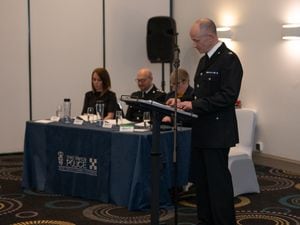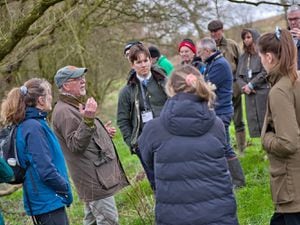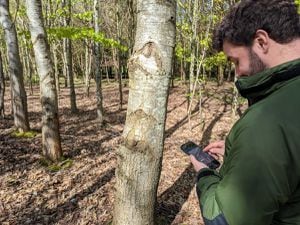Ludlow's 'human computer' Mary Edwards honoured with blue plaque
For decades she created complex charts to help sailors find their way safely at sea, while her husband took all the credit.

But now Mary Edwards has been commemorated with her own plaque on the historic Ludlow house she inhabited 200 years ago, when it was unheard of for a woman to occupy an academic government-funded position.
Mary lived from 1750 to 1815 at 4 Brand Lane and was known as a "computer", compiling astronomical tables for the use of ships at sea – or at least her husband the Rev John Edwards was, as she carried out her work under his name.
The plaque, to the first known female "computer", has been put up by the Ludlow Civic Society, after research work by Karen Lloyd. who lives at the house.
Her husband David Lloyd, chair of the civic society, admitted that, like Mary, in this case his wife had done all of the work starting her research in 2004.
He said: "When we bought this house in 2002 we were given the deeds and she was one of the names that appeared as one of its owners."
He said Mary's husband Rev John Edwards had been given the job of computer by Nevil Maskelyne, the Astronomer Royal, who was the creator and editor of the British Nautical Almanac, first published in 1767 and funded by the government through the Board of Longitude.
"But in fact it was her doing the work, probably to the knowledge of Nevil Maskelyne, though it came to light when Rev John Edwards died and the work carried on," Mr Lloyd said.
"So there she was in land-locked Ludlow helping sailors out at sea.
"The fact she was a woman and doing it on her own was exceptional.
"It's quite a nice little tale so we thought we would put something up on the house."
He said it was one of three new plaques agreed upon reviewing about 50 that the civic society already has up in Ludlow.
He said one of the new ones was for Edward V, one of the "princes of the tower" who disappeared before he could be crowned king, who resided in Ludlow Castle for a while before his mysterious fate – widely thought to have been imprisoned and then killed by Henry V.
"Another is over Barclay's Bank and relates to computer programmers for the Sinclair Spectrum who were there in the early days of computer games," said Mr Lloyd.
"The third it was thought should be to do with women in Georgian times who never received the credit they deserved – and Mary Edwards was known for being a female 'computer' in a man's world."
He said the plaque chimed in with a recent drive by English Heritage chairman Tim Laurence to get more recognition for historically important women who were often overlooked in favour of male counterparts in the nation's plaques.
"In Ludlow we are already doing it," said Mr Lloyd.





